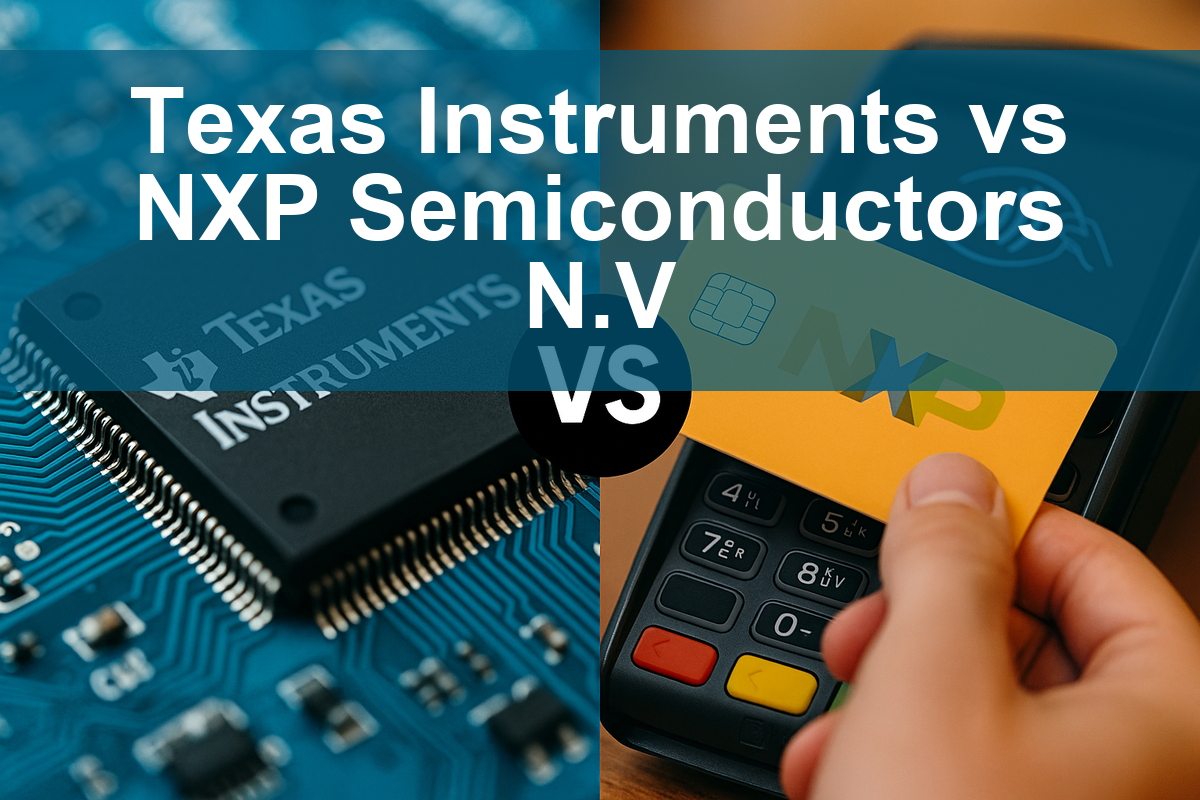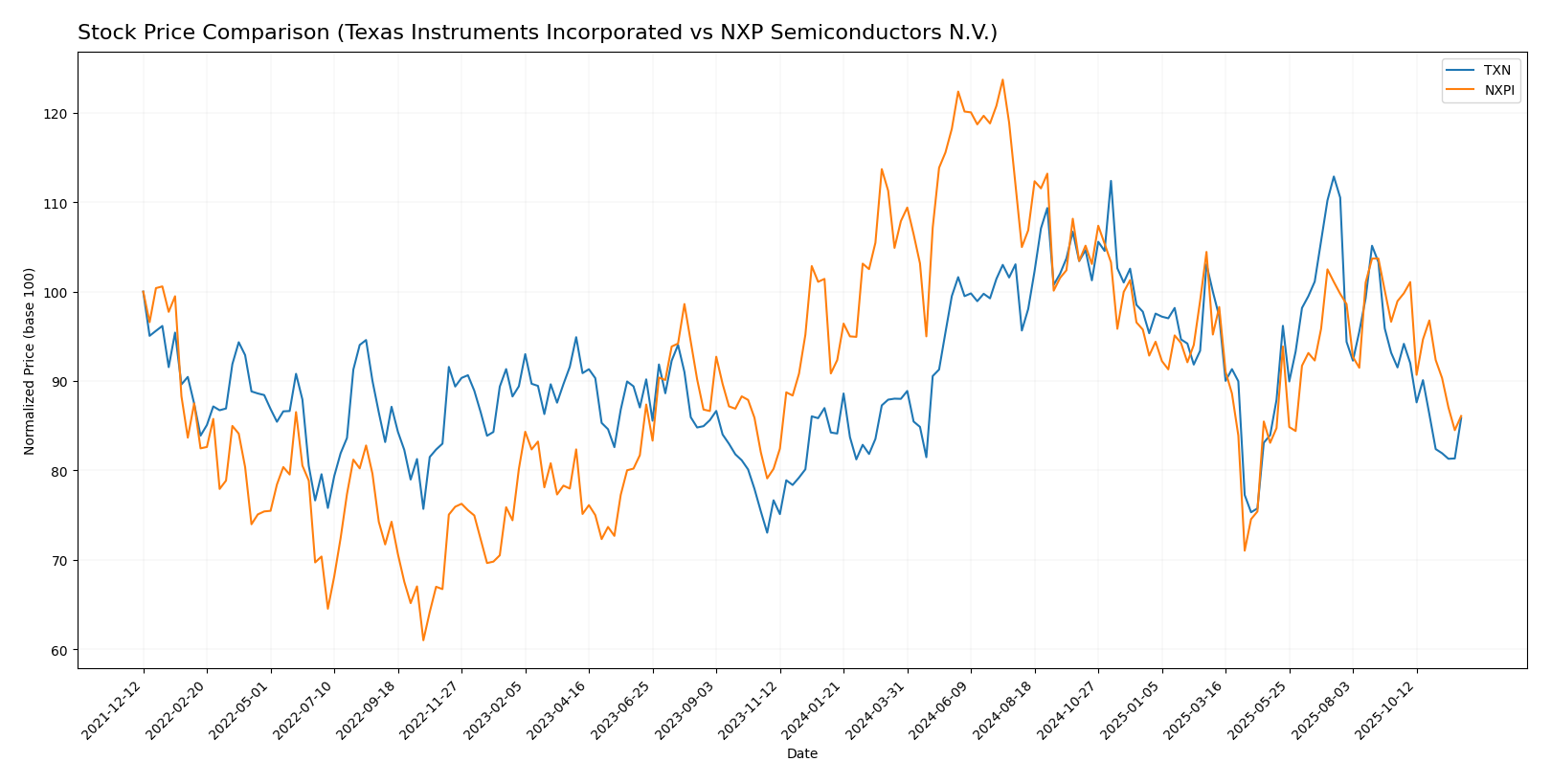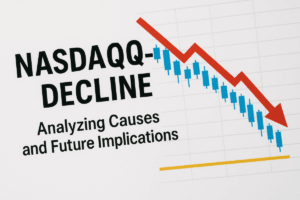In the dynamic world of semiconductors, Texas Instruments (TXN) and NXP Semiconductors (NXPI) stand out as key players shaping the industry’s future. Both companies operate in overlapping markets, focusing on innovative solutions for automotive, industrial, and consumer electronics. Their distinct approaches to product development and market strategy provide a fascinating comparison for investors. As we delve into their financial health, growth potential, and innovation strategies, I invite you to explore which company might be the more promising addition to your investment portfolio.

Table of contents
Company Overview
Texas Instruments Incorporated Overview
Texas Instruments (TXN) is a leading semiconductor company based in Dallas, Texas, known for its innovative designs and manufacturing of analog and embedded processing products. Founded in 1930, the company serves a diverse range of markets including industrial, automotive, and personal electronics. TXN focuses on providing power management solutions and signal chain products that enhance functionality in electronic devices. With a market capitalization of approximately $153B and a workforce of around 34K employees, Texas Instruments is well-positioned in the technology sector, continuing to drive advancements in semiconductor technology.
NXP Semiconductors N.V. Overview
NXP Semiconductors (NXPI), headquartered in Eindhoven, the Netherlands, is a prominent player in the semiconductor industry, specializing in microcontrollers, wireless connectivity solutions, and security controllers. Established in 2006, NXP has developed a strong reputation for delivering solutions tailored for automotive, industrial, and Internet of Things (IoT) applications. The company boasts a market capitalization of roughly $49B and employs approximately 33K individuals. NXP’s commitment to innovation is evident in its extensive product portfolio, which caters to a global customer base, including original equipment manufacturers and contract manufacturers.
Key similarities and differences
Both Texas Instruments and NXP Semiconductors operate within the semiconductor industry, focusing on innovation and technology solutions. However, TXN emphasizes power management and signal processing, while NXPI specializes in wireless connectivity and security solutions. This distinction highlights their unique market positions despite overlapping customer segments.
Income Statement Comparison
The following table provides a comparative overview of the most recent income statements for Texas Instruments (TXN) and NXP Semiconductors (NXPI), highlighting critical financial metrics.
| Metric | TXN | NXPI |
|---|---|---|
| Market Cap | 153B | 49B |
| Revenue | 15.64B | 12.61B |
| EBITDA | 7.54B | 4.42B |
| EBIT | 5.96B | 3.50B |
| Net Income | 4.80B | 2.51B |
| EPS | 5.24 | 9.84 |
| Fiscal Year | 2024 | 2024 |
Interpretation of Income Statement
In the latest fiscal year, Texas Instruments experienced a decline in revenue to $15.64B from $17.52B in 2023, reflecting a challenging market environment. Conversely, NXP Semiconductors recorded a slight revenue decrease from $13.28B to $12.61B. Despite this, TXN maintained healthier EBITDA and EBIT margins compared to NXPI. Notably, both companies reported a decrease in net income, with TXN at $4.80B and NXPI at $2.51B, indicating pressure on profitability margins. The growth trajectory appears slower for both companies, emphasizing the importance of monitoring operational efficiencies and market conditions as we move forward.
Financial Ratios Comparison
The following table provides a comparative overview of key financial ratios for Texas Instruments (TXN) and NXP Semiconductors (NXPI) based on the most recent data.
| Metric | TXN | NXPI |
|---|---|---|
| ROE | 28.39% | 27.33% |
| ROIC | 14.75% | 12.91% |
| P/E | 35.63 | 21.13 |
| P/B | 10.12 | 5.78 |
| Current Ratio | 4.12 | 2.36 |
| Quick Ratio | 2.88 | 1.60 |
| D/E | 0.80 | 1.18 |
| Debt-to-Assets | 38.29% | 45.89% |
| Interest Coverage | 10.76 | 8.59 |
| Asset Turnover | 0.44 | 0.52 |
| Fixed Asset Turnover | 1.38 | 3.86 |
| Payout ratio | 99.92% | 41.35% |
| Dividend yield | 2.80% | 1.96% |
Interpretation of Financial Ratios
The ratios indicate that Texas Instruments exhibits stronger profitability with higher ROE and ROIC compared to NXP Semiconductors. However, TXN’s high P/E ratio suggests the market may have high expectations for growth, which could pose risks if those expectations are not met. The liquidity ratios for TXN are significantly better, indicating a stronger short-term financial position. Conversely, NXP has a lower debt-to-assets ratio, which could be seen as a strength, but its higher payout ratio raises concerns about sustainability.
Dividend and Shareholder Returns
Texas Instruments (TXN) maintains a robust dividend strategy, with a payout ratio of 99.9% and a yield of 2.8%. However, this high payout raises concerns about sustainability, especially given the potential for economic downturns. In contrast, NXP Semiconductors (NXPI) has a lower payout ratio of 41.4% and a yield of 1.9%, indicating a more balanced approach, although it still engages in share buybacks. Both companies’ strategies reflect caution in supporting long-term shareholder value creation, with TXN’s high payout warranting careful monitoring.
Strategic Positioning
Texas Instruments (TXN) holds a robust position in the semiconductor market, commanding a significant share with its diverse product portfolio in analog and embedded processing. The company faces moderate competitive pressure from NXP Semiconductors (NXPI), which focuses on microcontrollers and wireless connectivity solutions. Both companies are navigating technological disruptions, particularly in the automotive and IoT sectors, necessitating continuous innovation to maintain their competitive edge.
Stock Comparison
In the past year, both Texas Instruments (TXN) and NXP Semiconductors (NXPI) have exhibited notable price movements, reflecting distinct trading dynamics and investor sentiment.

Trend Analysis
For Texas Instruments (TXN), the stock has experienced a percentage change of +1.92% over the past year. This indicates a neutral trend, as the change falls within the -2% to +2% range. The price peaked at 221.25 and dropped to a low of 147.6, while the recent trend from September 14, 2025, to November 30, 2025, shows a decline of -7.85%, suggesting deceleration in momentum. The standard deviation of 9.08 reflects moderate volatility.
Conversely, NXP Semiconductors (NXPI) has faced a percentage change of -5.24% over the same period, signaling a bearish trend. This stock saw a high of 280.19 and a low of 160.81. The recent trend from September 14, 2025, to November 30, 2025, indicates a significant drop of -10.91%, also suggesting deceleration. The standard deviation of 12.14 indicates higher volatility compared to TXN.
In summary, while TXN shows signs of stabilization, NXPI’s bearish momentum raises concerns for potential investors.
Analyst Opinions
Recent analyst recommendations for both Texas Instruments (TXN) and NXP Semiconductors (NXPI) indicate a consensus rating of “Buy.” Analysts have highlighted TXN’s solid return on equity and assets, despite lower scores in price-to-earnings and price-to-book ratios. Similarly, NXPI is praised for its balanced performance across key metrics, particularly in discounted cash flow. Notable analysts, including those from major investment firms, emphasize the growth potential in the semiconductor sector, making both stocks attractive for investors in 2025.
Stock Grades
In this section, I present the latest stock ratings for Texas Instruments (TXN) and NXP Semiconductors (NXPI) based on reliable grading data.
Texas Instruments Grades
| Grading Company | Action | New Grade | Date |
|---|---|---|---|
| Susquehanna | maintain | Positive | 2025-10-22 |
| Wells Fargo | maintain | Equal Weight | 2025-10-22 |
| Truist Securities | maintain | Hold | 2025-10-22 |
| Rosenblatt | maintain | Buy | 2025-10-22 |
| Goldman Sachs | maintain | Buy | 2025-10-22 |
| JP Morgan | maintain | Overweight | 2025-10-22 |
| Cantor Fitzgerald | maintain | Neutral | 2025-10-22 |
| Stifel | maintain | Hold | 2025-10-22 |
| TD Cowen | maintain | Buy | 2025-10-22 |
| Mizuho | downgrade | Underperform | 2025-10-20 |
NXP Semiconductors Grades
| Grading Company | Action | New Grade | Date |
|---|---|---|---|
| JP Morgan | maintain | Neutral | 2025-10-29 |
| Truist Securities | maintain | Buy | 2025-10-29 |
| Wells Fargo | maintain | Overweight | 2025-07-23 |
| Truist Securities | maintain | Buy | 2025-07-23 |
| Susquehanna | maintain | Neutral | 2025-07-23 |
| JP Morgan | maintain | Neutral | 2025-07-23 |
| Needham | maintain | Buy | 2025-07-22 |
| Barclays | maintain | Overweight | 2025-07-22 |
| Cantor Fitzgerald | maintain | Overweight | 2025-07-22 |
| Stifel | maintain | Hold | 2025-07-18 |
Overall, the trend in grades for both companies indicates a stable outlook, with multiple maintain ratings across various firms. Notably, Texas Instruments received a downgrade from Mizuho, while NXP maintained a solid performance with several “Buy” ratings. This suggests a cautious yet positive sentiment in the semiconductor sector.
Target Prices
The target consensus for Texas Instruments and NXP Semiconductors indicates a positive outlook from analysts.
| Company | Target High | Target Low | Consensus |
|---|---|---|---|
| Texas Instruments | 245 | 145 | 190.45 |
| NXP Semiconductors | 280 | 215 | 247.75 |
For Texas Instruments (TXN), the current price of 168.15 is significantly below the consensus target of 190.45, suggesting potential upside. NXP Semiconductors (NXPI) also shows promise, with a current price of 194.94 compared to a consensus target of 247.75. Both companies have favorable analyst expectations.
Strengths and Weaknesses
The following table outlines the strengths and weaknesses of Texas Instruments Incorporated (TXN) and NXP Semiconductors N.V. (NXPI), providing a comparative analysis for potential investors.
| Criterion | TXN | NXPI |
|---|---|---|
| Diversification | High | Moderate |
| Profitability | Strong (30.68% net margin) | Moderate (21.07% net margin) |
| Innovation | High (R&D focus) | Moderate |
| Global presence | Extensive | Strong |
| Market Share | Leading | Competitive |
| Debt level | Moderate (0.80 debt-to-equity) | High (1.18 debt-to-equity) |
Key takeaways indicate that Texas Instruments demonstrates stronger profitability and lower debt levels, making it a potentially safer investment. In contrast, NXP offers robust global presence and innovative capabilities but carries higher debt levels, increasing risk.
Risk Analysis
The following table outlines some of the key risks associated with Texas Instruments (TXN) and NXP Semiconductors (NXPI).
| Metric | TXN | NXPI |
|---|---|---|
| Market Risk | Moderate | High |
| Regulatory Risk | Low | Moderate |
| Operational Risk | Moderate | High |
| Environmental Risk | Low | Moderate |
| Geopolitical Risk | Moderate | High |
In my analysis, both companies face significant market and operational risks, particularly given the semiconductor industry’s volatility and ongoing geopolitical tensions affecting supply chains. NXP is more susceptible to these risks compared to Texas Instruments.
Which one to choose?
In comparing Texas Instruments (TXN) and NXP Semiconductors (NXPI), both companies exhibit solid fundamentals. TXN shows a higher gross profit margin (58.1%) compared to NXPI’s (56.4%), suggesting better efficiency in converting revenue into profit. TXN also has a more favorable debt-to-equity ratio (0.80 vs. 1.18 for NXPI), indicating lower financial risk. Analyst ratings for both companies are equal (B), but TXN has a slightly better return on equity (28.4% vs. 27.3%).
However, TXN’s stock trend is currently bullish, while NXPI is in a bearish phase, which could impact short-term performance. Investors focused on growth may prefer TXN due to its stronger recent performance and lower risk profile, while those seeking potential value plays may find NXPI’s lower valuation appealing.
Risks include competitive pressures and market volatility impacting both firms. Disclaimer: This article is not financial advice. Each investor is responsible for their own investment decisions.
Go further
I encourage you to read the complete analyses of Texas Instruments Incorporated and NXP Semiconductors N.V. to enhance your investment decisions:



